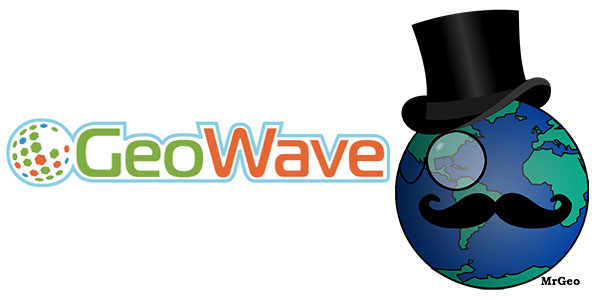- Open source makes for better GIS software.
- Free, open source software gives users and developers more control and allows us to work in new, better and more effective ways.
- These benefits have moved open source into the mainstream of GIS use.
 I could go on and on about how collaboration, innovation and control advantages have led to the mainstreaming of open source GIS. I could also point you to the growing roster of organizations supporting and using open source GIS. But I think the most useful discussion is how we at DigitalGlobe are building and use open source software for a huge range of geospatial applications every day.
For big data, we’ve led the development of GeoWave to leverage the scalability of a distributed key-value store for effective storage, retrieval and analysis of massive geospatial datasets. GeoWave enables enterprises to map and query geospatial information at scales far beyond standard geodatabases. Our heritage is pioneering open source image processing, storage and retrieval with OSSIM and OMAR. We develop geospatial libraries and applications that are used in the cloud to process imagery, maps, terrain and vector data. On the cutting edge, we are using distributed cloud computing and our updated imagery repositories to automate feature extraction for the world’s coastlines (Beachfront and Piazza), developing raster analytics at large scale (MrGeo), and leading the way on high-volume data conflation (Hootenanny).
I urge you to attend FOSS4G 2017 to meet some of DigitalGlobe open source specialists, and to learn more about our software and the other great open source software tools that are in wide use around the world.
I could go on and on about how collaboration, innovation and control advantages have led to the mainstreaming of open source GIS. I could also point you to the growing roster of organizations supporting and using open source GIS. But I think the most useful discussion is how we at DigitalGlobe are building and use open source software for a huge range of geospatial applications every day.
For big data, we’ve led the development of GeoWave to leverage the scalability of a distributed key-value store for effective storage, retrieval and analysis of massive geospatial datasets. GeoWave enables enterprises to map and query geospatial information at scales far beyond standard geodatabases. Our heritage is pioneering open source image processing, storage and retrieval with OSSIM and OMAR. We develop geospatial libraries and applications that are used in the cloud to process imagery, maps, terrain and vector data. On the cutting edge, we are using distributed cloud computing and our updated imagery repositories to automate feature extraction for the world’s coastlines (Beachfront and Piazza), developing raster analytics at large scale (MrGeo), and leading the way on high-volume data conflation (Hootenanny).
I urge you to attend FOSS4G 2017 to meet some of DigitalGlobe open source specialists, and to learn more about our software and the other great open source software tools that are in wide use around the world.